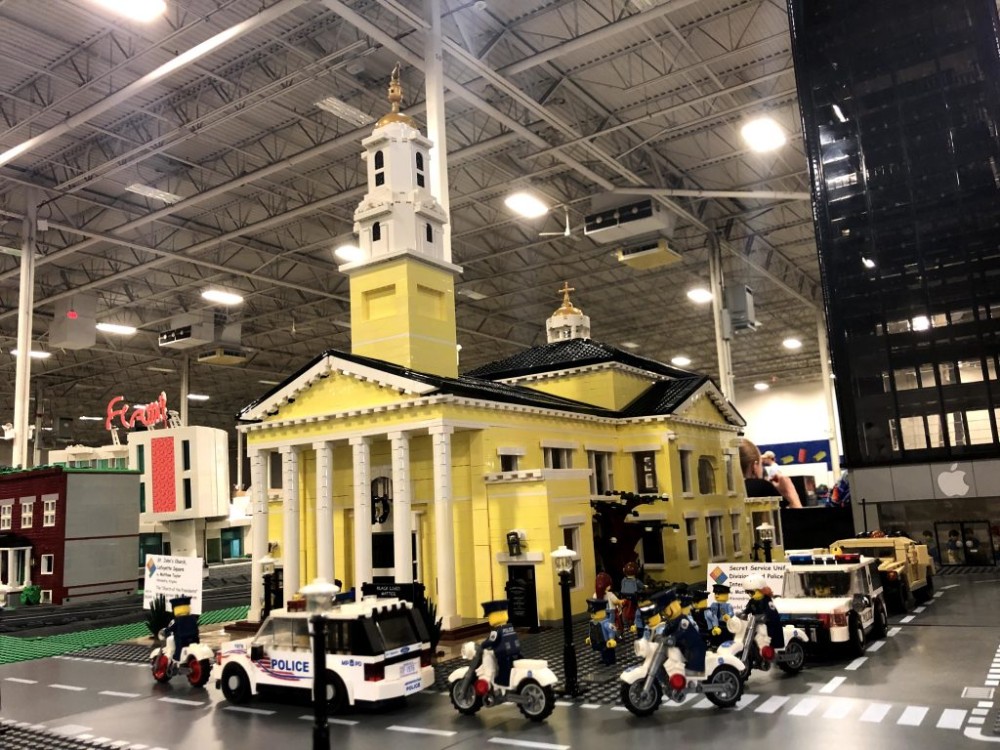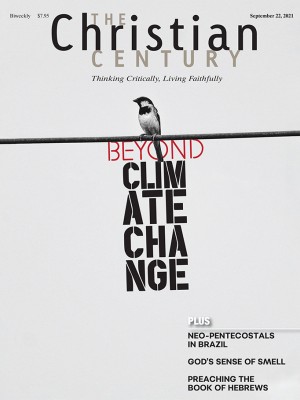DC church gets full Lego treatment as parishioner pairs faith, hobby

In Matthew Taylor’s imagination, St. John’s Episcopal Church is about 45 inches long and 24 inches high. His version of the historic church in Washington, DC, where he is a member, is made from as many as 5,000 Lego bricks, many of them purchased online from aftermarket sellers around the country and the world. Its plastic parishioners are each the size of a thumb.
“This is the biggest Lego model I’ve ever built,” said Taylor, 31. With the model mostly complete, he showed it off this summer at the annual BrickFair expo in Chantilly, Virginia, alongside his Lego model of Christ Church in nearby Alexandria, where he now lives. The Lego St. John’s caught the eye of CNN’s Jake Tapper, who posted a photo of it to Twitter during a family visit to BrickFair.
Read our latest issue or browse back issues.
The real-life, full-size version of the church was built in 1816. St. John’s is now best known as “the church of the presidents” because of the occasional visits made by the current occupant of the White House, which is across the street.
Last year, the church was the backdrop to large Black Lives Matter protests. During those protests, it sustained minor damage from vandalism, and the site became a focal point for outrage directed at President Donald Trump for posing for a photo outside St. John’s after police had forcibly cleared protesters from the square.
Taylor’s model of St. John’s includes Lego versions of the police officers and police vehicles that now regularly patrol outside the church, but he said he didn’t set out to make a political statement. His goal instead was detailed authenticity.
The biggest hurdle was getting the color right. It’s hard to find Lego bricks in St. John’s unique shade of yellow. The Denmark-based toy company has produced 6,233 different brick shapes in its standard yellow, Taylor said, but only 363 in the “cool yellow” he needed for his St. John’s model.
The model captures other key features of St. John’s, from its six street-facing white columns to subtle details of the interior, such as the pulpit, pipe organs, and chandelier. Taylor started the building in August 2020, while the pandemic still was preventing the congregation from gathering for worship inside the church, so he conducted much of his research on interior details using online resources, such as the Historic American Buildings Survey.
“Now that we’re back in the church, I’ve been able to take pictures of things,” Taylor said. He began noticing details that previously had escaped his attention, like a big brass cross positioned in the balcony. The model took about a year to build and revise, and he’s still adding some finishing touches. Only half of the pews are installed.
“Building sort of happens in fits and spurts because of shipping delays,” he said. “It’s been really rewarding to see it all come together.”
Taylor began attending worship services at St. John’s nearly a decade ago while earning his law degree from Georgetown University. The church “was a real place to find solace and peace” away from the grind of law school, Taylor said.
Two years ago, his faith and his Lego hobby intersected at Washington National Cathedral.
As part of the cathedral’s ongoing fundraiser, he volunteered to help paying visitors build segments of a growing Lego model of the Gothic structure, which he now calls the “big Lego cousin” to his St. John’s model. When finished, the National Cathedral model will incorporate an estimated 500,000 Lego bricks.
Taylor’s first stab at a Lego St. John’s came a few years ago, when he created a tiny version of the church as a gift for a fellow student in a church class who was moving to Minnesota. That got him thinking about expanding the design.
Taylor has shared photos of the model in progress with the clergy at St. John’s, on Facebook, and on his personal blog. The model has not yet made an appearance inside the church it is modeled after, but Taylor hopes someday to display it at St. John’s for the whole congregation to see.
“I hope that they enjoy seeing it as much as I enjoyed building it,” he said. —Episcopal News Service





